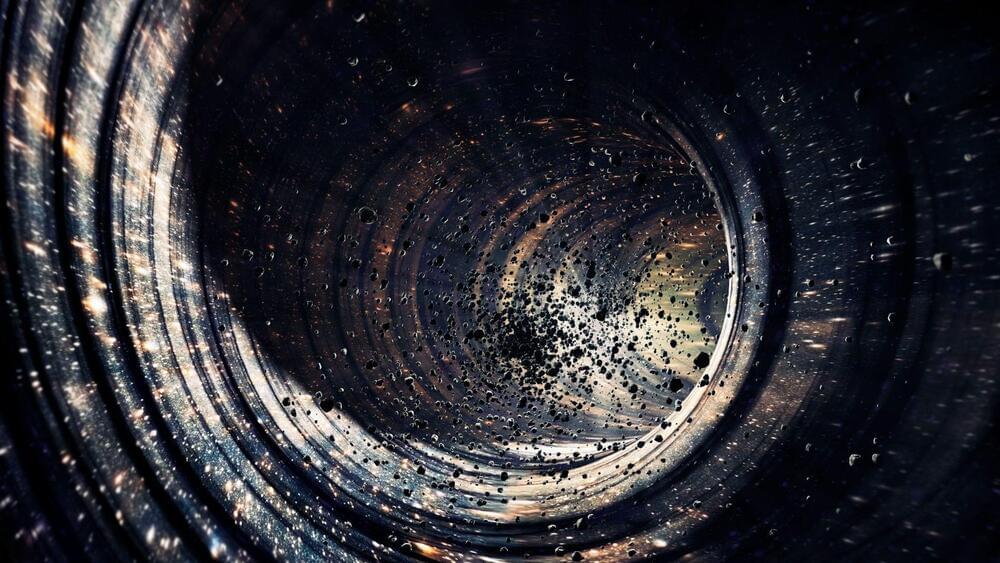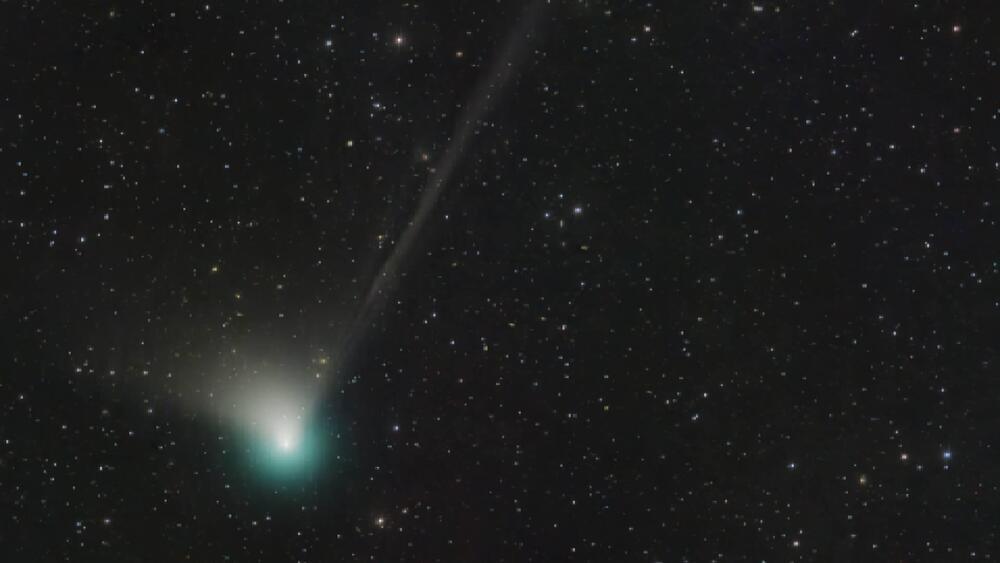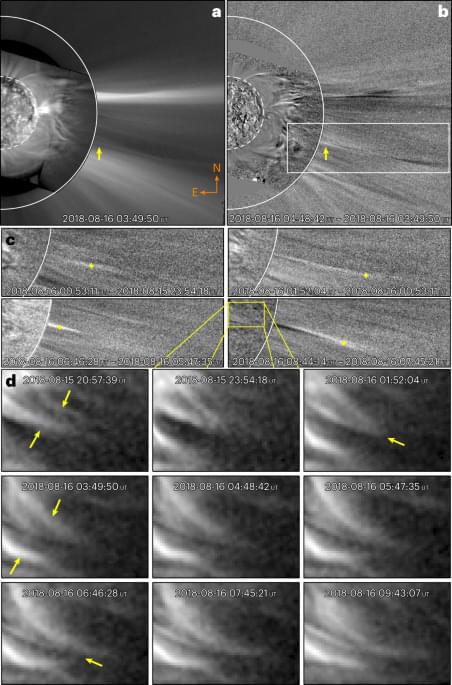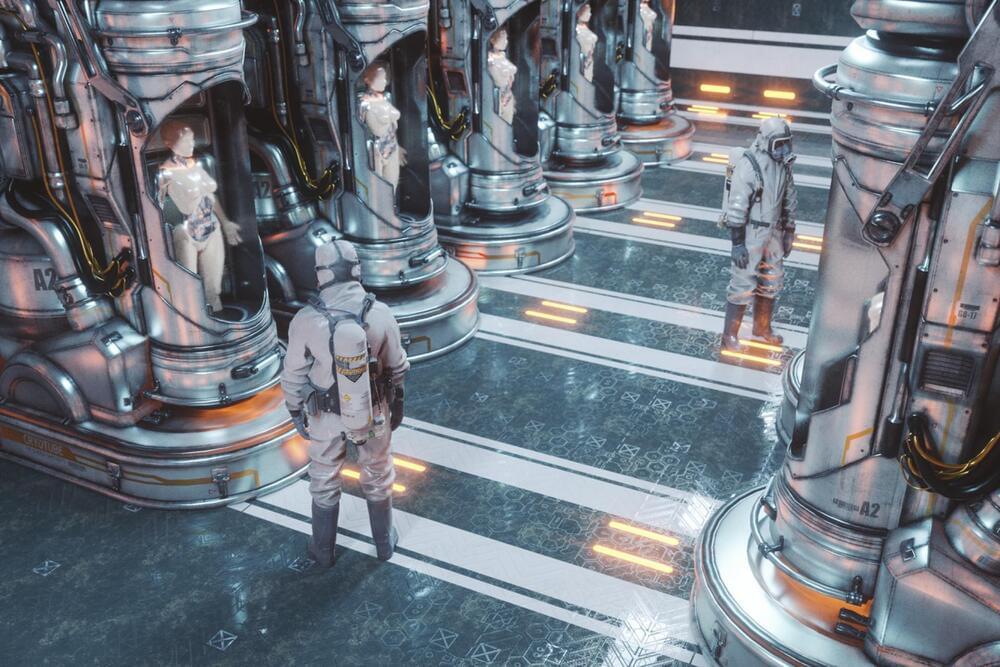In the grand scheme of the cosmic story, a single year isn’t all that significant. But over time, the annual changes really add up!
Category: space – Page 431
The Solar Wind is Creating Water on the Surface of the Moon
Water on the Moon has been a hot topic in the research world lately. Since its first unambiguous discovery back in 2008. Since then, findings of it have ramped up, with relatively high concentration levels being discovered, especially near the polar regions, particularly in areas constantly shrouded in shadow. Chang’e 5, China’s recent sample return mission, didn’t land in one of those permanently shadowed areas. Still, it did return soil samples that were at a much higher latitude than any that had been previously collected. Now, a new study shows that those soil samples contain water and that the Sun’s solar wind directly impacted that water.
The amount of water on the lunar surface varies widely both based on the time of the lunar day and the latitude it is located at. There is so much variability that the water content of the lunar soil can be 200 ppm higher or lower at different times of the day. With that much variability, it seems clear that the Sun plays a significant role in the hydrological cycle there is on the Moon.
Part of that role is controlling the type of hydrogen embedded into the lunar soil. Since the Moon has almost no atmosphere to speak of, the charged hydrogen particles that make up the solar wind can directly interact with the top regolith layer on the lunar surface. When they do so, they leave behind a distinct sign that they do – a large amount of hydrogen atoms with very little deuterium.
These Were Our Favorite 25 Tech Stories From Around the Web in 2022
Year 2022 face_with_colon_three
From the rise of ‘synthetic creativity’ to a study of doppelgängers and a road trip to the edge of the universe, these were the stories we loved in 2022.

A new physics-defying theory describes the effects of faster-than-light travel
Extended special relativity describes how the universe would look if you broke the speed of light.
Scientists from the University of Warsaw in Poland and the National University of Singapore are pushing the limits of relativity with a new theory called the “extension of special relativity,” a report from Science Alert reveals.
The scientists’ new study suggests that objects may be able to go faster than the speed of light without completely shattering our current laws of physics.
Gremlin/iStock.
The new theory combines three time dimensions with a single space dimension (“1+3 space-time”), providing an alternative, mind-bending scenario to the three spatial dimensions and one time dimension we all know.

Quadrantids: You need to see 2023’s most elusive meteor shower just after New Year’s Day
What causes meteor Showers?
Meteor showers are a cool reminder that we live on a giant ball of rock flying through space. As it circles the Sun, Earth sometimes runs into dusty debris trailing in the wake of comets — or, in the case of the Quadrantids, the wake of a small asteroid. Dust grains fall into our atmosphere, and they’re moving so fast that the friction of the air rushing past is enough to disintegrate them, creating the tiny streaks of light we see during meteor showers.
Most of our planet’s encounters with these dusty debris trails happen at about the same point in its orbit, so you can think of annual meteor showers like the Quadrantids as Earth passing a familiar landmark in space.

A comet not seen since 50,000 years will be visible again in early 2023
It’s called the C/2022 E3 (ZTF) comet.
A comet that last appeared in the night sky during the Ice Age will soon make a reappearance in February 2023, according to a NASA statement published last week. Called the C/2022 E3 (ZTF) comet, it orbits the sun every 50,000 years. It will now pass within 26 million miles of Earth on February 1st, 2023.
It could also be visible to the naked eye in mid-to-late January. The comet can be seen using binoculars and low-level telescopes when the skies are clear.
NASA/Dan Bartlett.
Called the C/2022 E3 (ZTF) comet, it orbits the sun every 50,000 years. It will now pass within 26 million miles of Earth on February 1st, 2023.

Why Some Individuals Can’t ‘See’ Anything When They Close Their Eyes
Now picture a random object, or a scene from your childhood, and ask yourself the same questions. How vividly can you ‘see’ it in your mind?
Some people cannot see anything. Nothing. Their mind’s eye is blank. They experience a neural phenomenon called aphantasia.
Aphantasia is a condition in which a person cannot visualize mental images. In other words, when they attempt to imagine or think about something they cannot create an internal mental image or picture. Because of this, individuals who experience aphantasia can have a hard time recalling things like past experiences and the visual details associated with those memories. They also tend to have difficulty with tasks that require visualizing or imagining physical objects and how they move and rotate in space. This can have an impact on their spatial reasoning.

Study Shows How The Universe Would Look if You Broke The Speed of Light, And It’s Weird
Nothing can go faster than light. It’s a rule of physics woven into the very fabric of Einstein’s special theory of relativity. The faster something goes, the closer it gets to its perspective of time freezing to a standstill.
Go faster still, and you run into issues of time reversing, messing with notions of causality.
But researchers from the University of Warsaw in Poland and the National University of Singapore have now pushed the limits of relativity to come up with a system that doesn’t run afoul of existing physics, and might even point the way to new theories.

Direct observations of a complex coronal web driving highly structured slow solar wind Astronomy
Thus, our SUVI observations captured direct imprints and dynamics of this S-web in the middle corona. For instance, consider the wind streams presented in Fig. 1. Those outflows emerge when a pair of middle-coronal structures approach each other. By comparing the timing of these outflows in Supplementary Video 5, we found that the middle-coronal structures interact at the cusp of the southwest pseudostreamer. Similarly, wind streams in Supplementary Figs. 1 – 3 emerge from the cusps of the HCS. Models suggest that streamer and pseudostreamer cusps are sites of persistent reconnection30,31. The observed interaction and continual rearrangement of the coronal web features at these cusps are consistent with persistent reconnection, as predicted by S-web models. Although reconnection at streamer cusps in the middle corona has been inferred in other observational studies32,33 and modelled in three dimensions30,31, the observations presented here represent imaging signatures of coronal web dynamics and their direct and persistent effects. Our observations suggest that the coronal web is a direct manifestation of the full breadth of S-web in the middle corona. The S-web reconnection dynamics modulate and drive the structure of slow solar wind through prevalent reconnection9,18.
A volume render of log Q highlights the boundaries of individual flux domains projected into the image plane, revealing the existence of substantial magnetic complexity within the CH–AR system (Fig. 3a and Supplementary Video 7). The ecliptic view of the 3D volume render of log Q with the CH–AR system at the west limb does closely reproduce elongated magnetic topological structures associated with the observed coronal web, confined to northern and southern bright (pseudo-)streamers (Fig. 3b and Supplementary Video 8). The synthetic EUV emission from the inner to middle corona and the white-light emission in the extended corona (Fig. 3c) are in general agreement with structures that we observed with the SUVI–LASCO combination (Fig. 1a). Moreover, radial velocity sliced at 3 R ☉ over the large-scale HCS crossing and the pseudostreamer arcs in the MHD model also quantitatively agree with the observed speeds of wind streams emerging from those topological features (Supplementary Figs. 4 and 6 and Supplementary Information). Thus, the observationally driven MHD model provides credence to our interpretation of the existence of the complex coronal web whose dynamics correlate to the release of wind streams.
The long lifetime of the system allowed us to probe the region from a different viewpoint using the Sun-orbiting STEREO-A, which was roughly in quadrature with respect to the Sun–Earth line during the SUVI campaign (Methods and Extended Data Fig. 6). By combining data from Solar Terrestrial Relations Observatory-Ahead’s (STEREO-A) extreme ultraviolet imager (EUVI)34, outer visible-light coronagraph (COR-2) and the inner visible-light heliospheric imager (HI-1)35, we found imprints of the complex coronal web over the CH–AR system extending into the heliosphere. Figure 4a and the associated Supplementary Video 9 demonstrate the close resemblance between highly structured slow solar wind streams escaping into the heliosphere and the S-web-driven wind streams that we observed with the SUVI and LASCO combination. Due to the lack of an extended field of view, the EUVI did not directly image the coronal web that we observed with SUVI, demonstrating that the SUVI extended field-of-view observations provide a crucial missing link between middle-coronal S-web dynamics and the highly structured slow solar wind observations.

Neural control of monkeys’ body temperatures could be useful for space travel
The study aims to induce hibernation in monkeys and, eventually, in humans.
In a new study, researchers reduced the core body temperature of crab-eating macaques purely by controlling their brains. The study aims to find a way to induce hibernation in monkeys and, eventually, in humans.
Gremlin/iStock.
Hibernation enables mammals such as bears and rodents to survive adverse weather conditions or a lack of food. During this deep sleep state, they enter a kind of energy-saving mode. Breathing, heart rate, and energy consumption are all drastically reduced; their body temperature plummets, and their metabolism and the chemical reactions that keep them alive slow. Scientists call this condition’ torpor.’ Animals hibernate by alternating between long periods of torpor and brief periods of arousal, during which they wake up to feed.